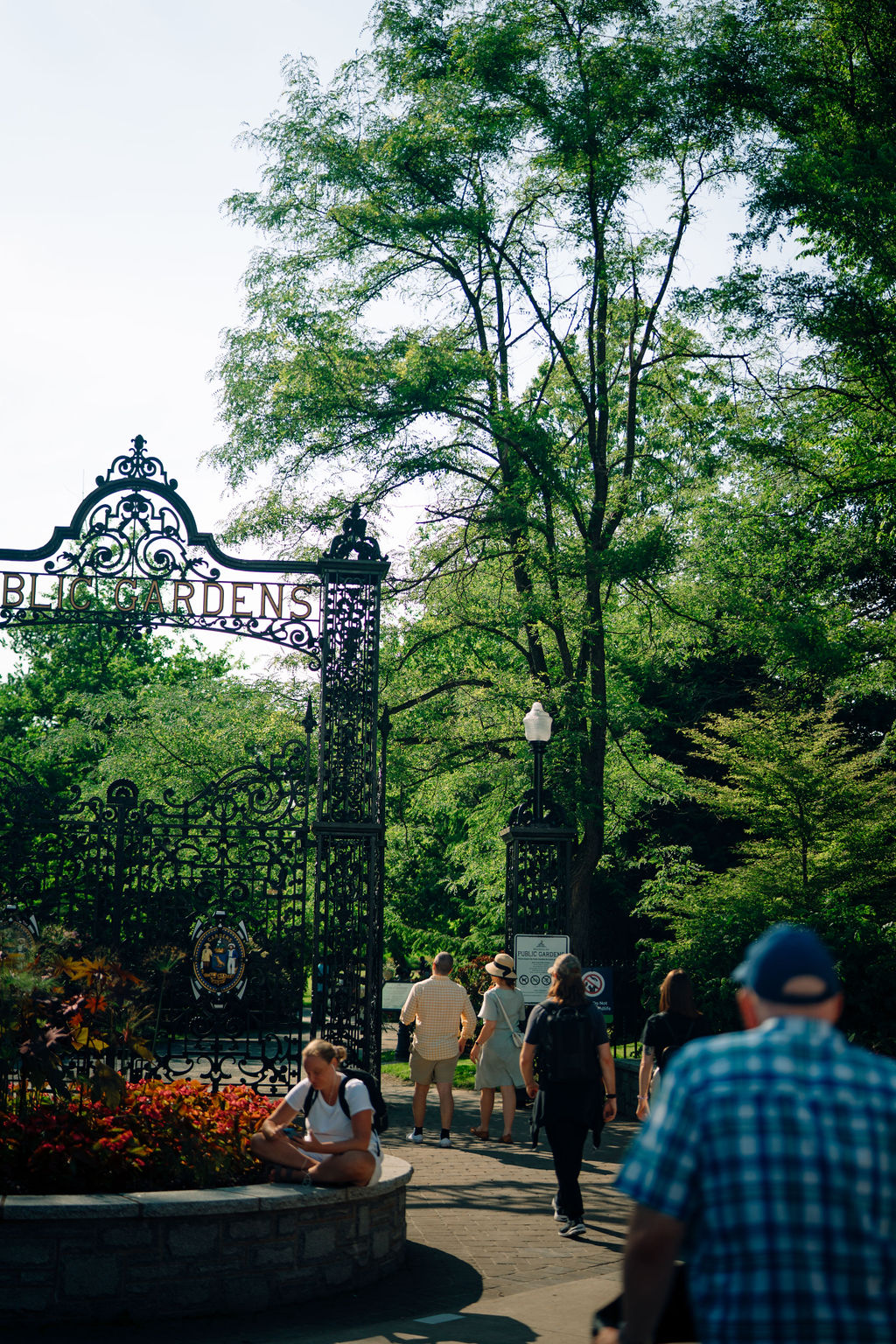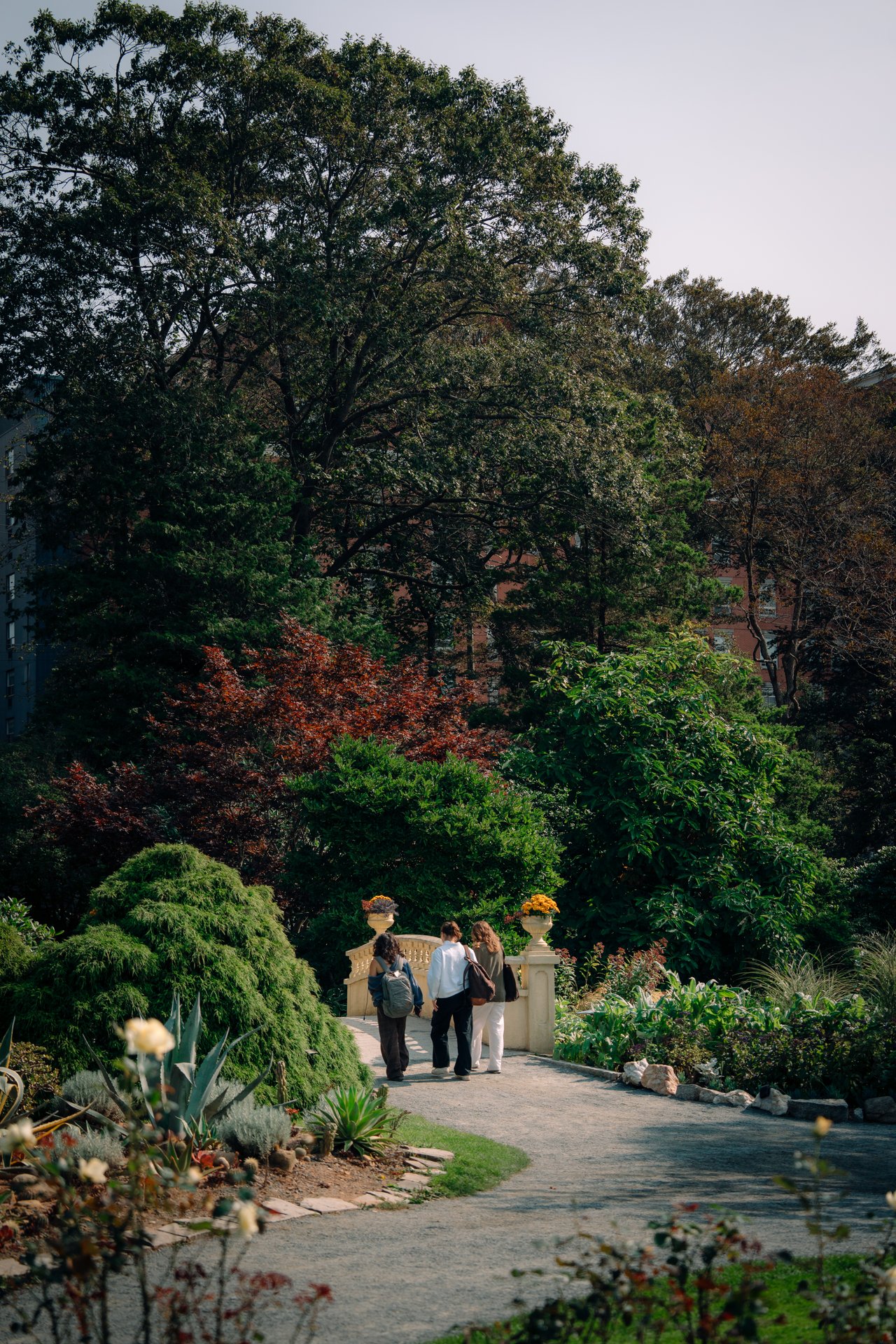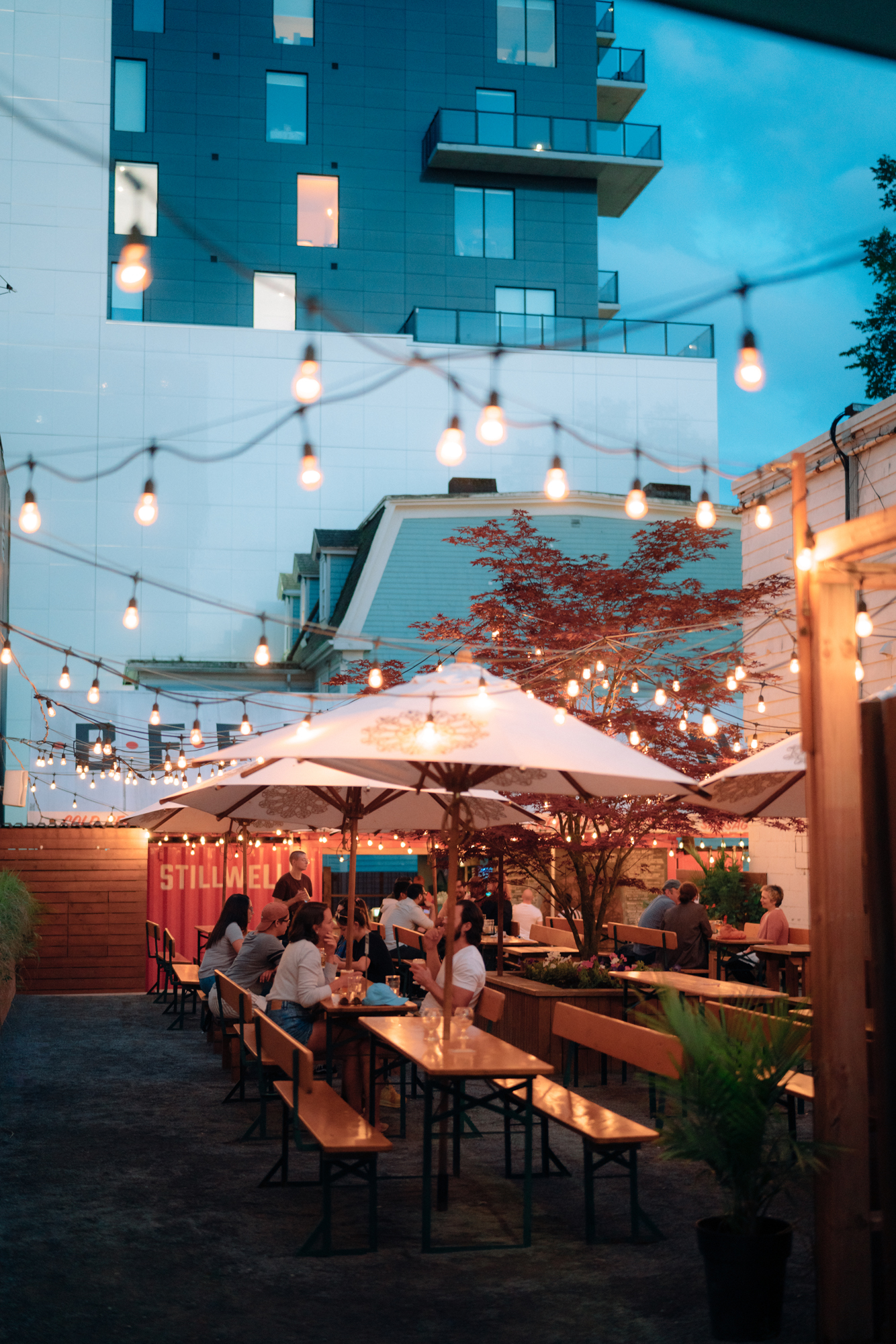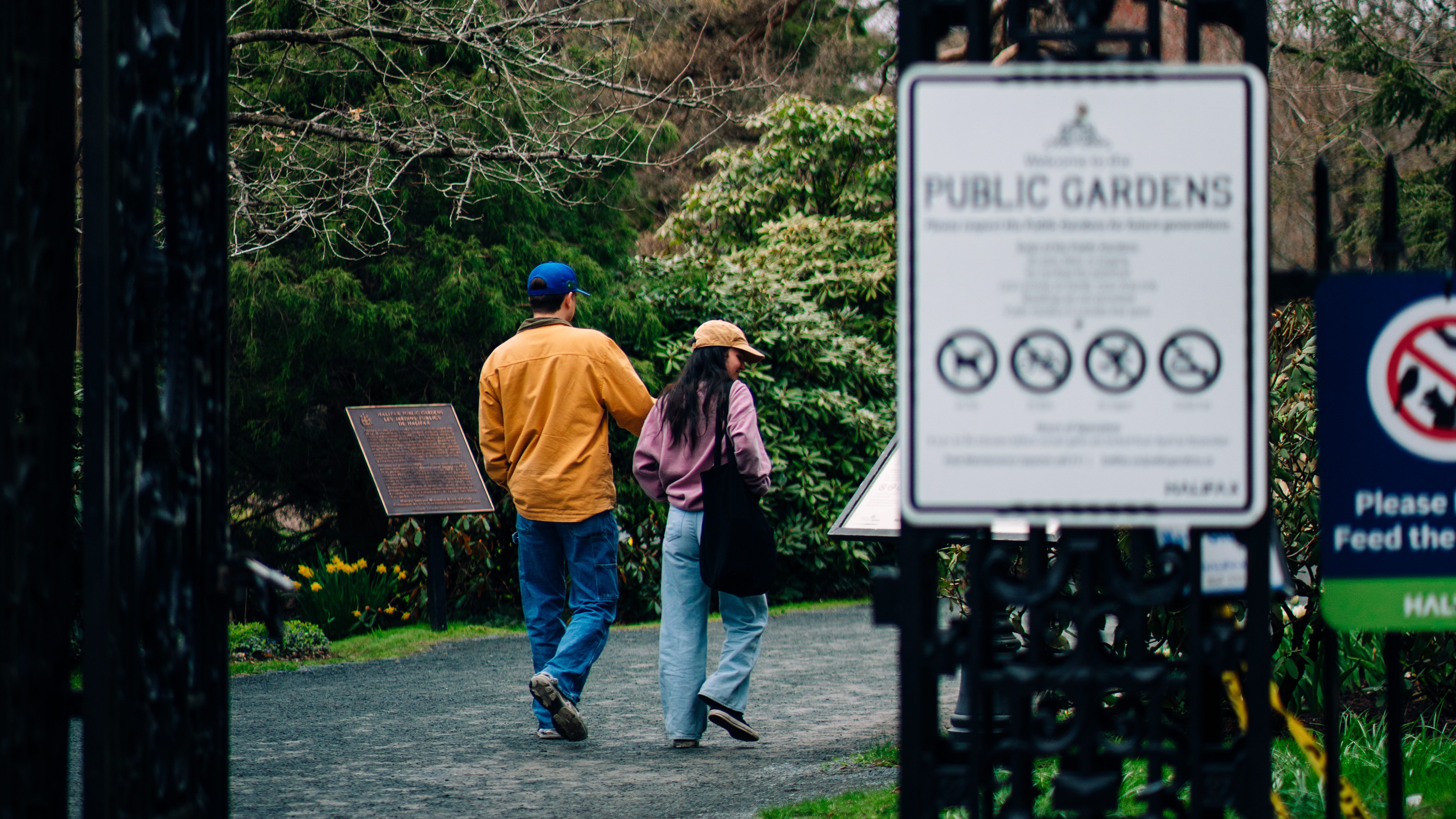Step into a fairytale at the Halifax Public Gardens. Get lost in the beauty of this historic gem, nestled in the heart of Halifax. Explore the vibrant floral displays, catch fuzzy ducklings nuzzling each other near the pond, and wander the lush, intricate pathways that tell the tales of more than 150 years of botanical wonder.
The Halifax Public Gardens is a beautiful and peaceful 16-acre Victorian-era public gardens formally established in 1867. It features carefully manicured lawns, colourful floral displays, and mature trees, along with a historic bandstand, duck pond, fountains, and a system of winding paths through it all.
History of the Gardens
The Halifax Public Gardens is a beautiful and peaceful 16-acre Victorian-era public gardens formally established in 1867 through the amalgamation of two adjoining gardens; a swampy piece of wasteland and a beautiful bequest from an estate.
Initiated by the Nova Scotia Horticultural Society in 1836 and spearheaded by Joseph Howe, the Gardens were developed on a 5.5-acre piece of the Halifax Commons that was donated in 1841. Twenty-five years later, in 1866, politician John MacCulloch began the work of expanding the Gardens, and by 1872, Richard Power unified the gardens into a cohesive design. Many notable features were added during this period, including the Bandstand, Jubilee Fountain, and Gardener’s Lodge.
Continuous restoration efforts, particularly after Hurricane Juan in 2003, vandalism in 2022, and a fire in Horticultural Hall in 2023, have preserved and enhanced this historic urban oasis.

Garden Features
Main Gates
The ornate wrought iron gates which welcome visitors to the Gardens bear the coat of arms of the city of Halifax, “E Mari Merces”, which means wealth from the sea.
Bandstand
The original bandstand, built in 1887 to commemorate Queen Victoria’s Golden Jubilee, was restored in 2011 and sits at the heart of the Halifax Public Gardens. has been a venue for concerts and been the focus of social events for over 125 years. During the summer there are 32 geometric garden beds surrounding the bandstand, planted in traditional Victorian annuals. These floating beds provide exuberant colour and complement the intricately carved wooden trim of the bandstand.
Bridges
The upper and lower bridges of the Public Gardens are destinations of choice for wedding and graduation photos. Both are made of concrete, with elaborate balusters and concrete urns on the four corner pedestals.
Carpet Beds
Carpet beds are a Victorian garden tradition consisting of densely arranged dwarf plants with contrasting leaf colours depicting a particular design or motif. The plants usually are not allowed to flower and are consistently clipped during the season to keep the lines sharp. The Halifax Public Gardens contain two carpet beds that are used annually to commemorate special events.
Geometric Beds
The 32 geometric geometric beds are a common element of Victorian gardens. During the summer these floating beds, planted in traditional Victorian annuals, provide exuberant colour and visual intrigue.
Tropical Display Bed
As was the custom of the times, Victorian Gardens included Tropical Display Beds for exotic plant material that few people would otherwise be able to see. Most of the plants in the display bed must be overwintered in greenhouses to survive Halifax’s Zone 6 winters.
Horticultural Hall
Originally built as a meeting hall and storage area for the NS Horticultural Society in 1847, Horticultural Hall is the oldest part of the Halifax Public Gardens along with the four elm trees at each of its four corners. Today, it houses a café where visitors can enjoy their coffee and snacks on the deck surrounding the building.
Griffin’s Pond and Titanic Model
This man-made pond is named after a young Irishman who was hanged on its banks and whose murder conviction was later questioned. Griffin’s pond was once part of a natural watercourse that flowed through the Gardens. Over the years it has become a stopping place for migrating birds, and a regular flyover location for cruising ospreys. Since 1994, a model of the Titanic, donated by the Maritime Ship Modellers Guild, makes its summer anchorage on Griffin’s Pond. This follows a long-standing tradition of displaying ships’ models in Victorian gardens.
Soldier’s Memorial Fountain
The 1903 fountain commemorates Canadian soldiers from the South African War, topped with a figure modeled after a local Mounted Rifleman, supported by a Corinthian capital with four cranes. Nearby, a Weeping European Beech and a ring of Camperdown Elms, including one donated by a soldier’s family, add to the memorial’s significance.
Bird Enclosure
An Aviary or significant recognition of feathered garden denizens is often a regular feature of a Victorian Garden. The Halifax Public Gardens has had, until recently a Bird Enclosure, originally named as the Swan Enclosure. This site has been the home of swans and geese since King George V donated the first pair of swans to the Public Gardens in 1926. After the death of Horatio (2008), the last surviving swan, Flora and Finnegan, a pair of Toulouse Geese, became the new residents of the bird enclosure. Diana, another Toulouse Goose joined Flora after the sudden death of Finnegan. Both Flora and Diana have delighted visitors with their supple, gyrating necks. until they too passed on. Today, swans grace the garden with their presence every summer, and during the winter months, they take a winter vacation at a wildlife sanctuary.


Visiting the Gardens
Location
The Halifax Public Gardens comprise an entire block of the downtown core, bordered by Spring Garden Road, Summer Street, South Park Street, and Sackville Street.
The main gate of the Halifax Public Gardens is located at the corner of Spring Garden Road and South Park Street, with gates at the other three corners as well.
Hours
Gates open at 8 a.m. and close 30 minutes before dusk, year round.


Make a day of your visit
There are plenty of things to do around the Halifax Public Gardens. Whether you’re cozying up at the Public Library, filling up on fresh fare, strolling the dreamy gardens, or browsing local goods at a boutique, you can find it all in the Spring Garden Area. A few local favourites include:
Ice cream at the Dairy Bar*
Coffee at Apartment 3 Espresso Bar
Brunch at Bliss Caffeine Bar
Catch a Halifax Wanderers FC game at the Wanderers Grounds*
Grab a local pint at Stillwell Beergarden*
Browse the stacks at the Halifax Central Library
Shop the boutiques along Spring Garden Road
*Seasonal



Guidelines for visiting the Gardens
To protect the serene atmosphere and enjoyment of the Gardens, pets, bicycles and jogging are not permitted within the Gardens. Bike parking is available outside the main gate.
The Public Gardens is a smoke free zone. No smoking is permitted anywhere in the Gardens.
Please do not feed the water fowl and birds – there is plenty of natural food is available for them.
Please use the waste receptacles available throughout the Gardens.
Please use the established pathways rather than the grass to enjoy the garden vistas. Lawn activity is encouraged on the Family Lawn Area located at the Spring Garden and Summer Streets area.

Halifax Public Gardens FAQs
What is the price of admission?
The Halifax Public Gardens are free to enter.
Do I need a reservation?
No reservations are required for daily entry to the Gardens.
Do the Gardens offer guided tours?
Free one-hour horticultural and historical tours are available. Learn more.
Can I have my wedding in the Gardens?
Weddings are not allowed in the Gardens as they are private events and all events within the Gardens must be open to the public.
Can I take my wedding/prom pictures in the Gardens?
Wedding and prom pictures are encouraged. Share the gardens and be respectful of other parties, the flower beds and grass.
Can I have a picnic in the Gardens?
Yes, in the family area which is a spacious area facing Summer Street. We request you do not walk or sit on the grass in the other areas of the gardens.


